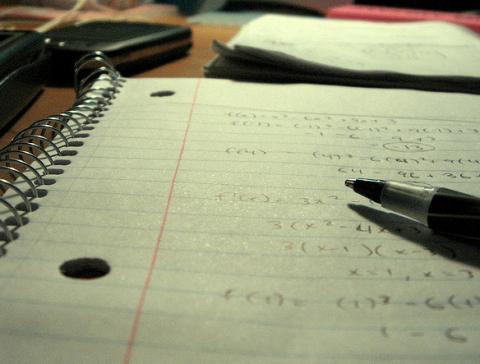The incalculable value of maths

Poor success rates in Leaving Cert maths show an almost native incapacity to engage with the subject. Teaching methods aside, the general public’s fear of mathematics is an issue that needs to be overcome if post primary students are not to follow suit, particularly when so much interesting stuff is happening at third level. By John Holden.
Nicolaus Copernicus once described the subject everyone loves to hate in terms most lay people would agree with: “Mathematics is written for mathematicians.” If it was like a foreign language when you were at school, it probably now reads like a communication from E.T (not the movie character).
Its absolutely crucial part to play in society is often lost on us. But from everyday activities we all engage in - like trying out different routes to work to see which is quickest, wondering why buses come in threes, playing sports or just betting on horses – mathematical principles can often be at play.
And mathematicians are using their craft to improve all our lives.
Catalonian researchers are putting their maths skills to practical use at the Universitat Autònoma de Barcelona (UAB) where they have made an electronic tongue designed to recognise different types of cava wines. Through the combined efforts of sensor systems and advanced mathematical procedures the robotic tongue can name wines as accurately as a sommelier. (Currently it can identify three types of cava: Brut, Brut Nature and Medium-Dry).
In Ireland, our taxes are also paying for more significant mathematical research. UL Professor James Gleeson has invented a new mathematical technique which “analyses and predicts the outcome of dynamic changes on large-scale networks.” What this means is Gleeson’s technique will be able to give accurate predictions of the spreading of various phenomena, like health epidemics, computer viruses or social media trends.
His paper, ‘High-accuracy approximation of binary-state dynamics on networks’ was published by the journal Physical Review Letters, earlier this month. From the designer’s own perspective he described the technique as “a way of seeing how links in our connected world affect us in many ways. This model can be applied to examine the spread of diseases such as H1N1 (swine flu) by understanding the complex networks within society. The airline network, for example, tells us how many people fly to and from each airport in the world every day, and these travellers are often the primary spreaders of epidemics and pandemics.”
The benefits of such a technique in controlling the spread of swine flu in Ireland not so long ago would have been profound. But such is the nature of much new mathematical research. Like so many other university departments, maths has to prove its relevance to society in order to guarantee its future existence. “As an applied mathematician my focus is to use maths to solve real-world problems, and to see how different spreading phenomena, like diseases or rumours on social networks, can have a unified mathematical description,” says Gleeson. “One of the most significant results of this technique will be its application in global healthcare. This research will enable scientists in many different fields to obtain more accurate predictions for spreading behaviours, in particular epidemics. Better understanding how diseases spread can inform how vaccination should be rolled out and targeted at specific groups, and so guide the response required by governments and healthcare.”
Elsewhere joint research carried out by the University of Miami (UM) and the University of Heidelberg in Germany has resulted in a mathematical model to help predict the progress of a tumour.
When a cancer forms in our body, the tumour will either stay one size, lying dormant, or it can grow larger with the help of a network of underlying vessels. The vessels serve as paths for the cancer to travel elsewhere in our bodies. This is known as metastasis.
In an interview with Science Daily, Neil Johnson, Professor of Physics at UM and co-principal investigator on the study described cancer as a “disease of many scales. There are the individual cells, the cells that group together to form the tumor, the vasculature and finally metastasis. By including information about how the tumor grows in response to its nutrients, and how the growth of the tumor feeds back the nutrient supply itself, our model moves us one step closer to predicting the future evolution of a patient's tumor. It opens up a path toward personalized treatment and intervention."
In the findings, published in online journal Scientific Reports, the mathematical model looks at the circulation of feeding vessels in a tumor. As the vessels feed and in turn are fed by the tumour, they can look at the characteristics of a patient’s tumour and make estimations as to its future growth.
Image top: Amy Loves Yah.
